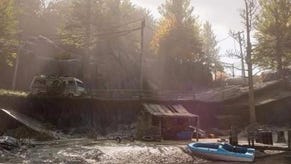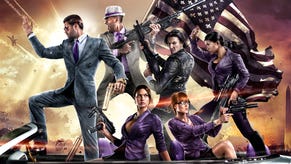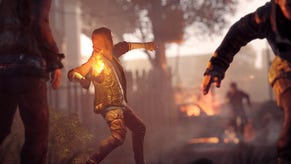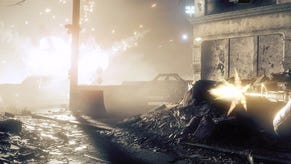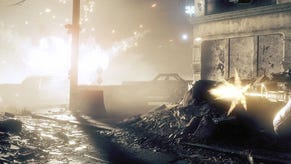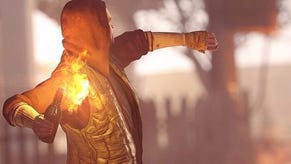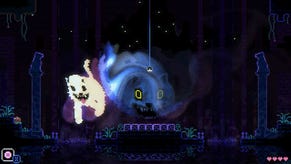Homefront: The Revolution review
It's always gunny in Philadelphia.
Revolutions are precarious things. They're frequently characterised by an intoxicating underdog narrative; one which charts the glorious rise of the oppressed masses to topple their cruel overseers. By the same token, however, that surge of momentum can be a very dangerous thing - one that causes people to lose track of their moral compass. Many terrible things have been done in the name of revolution, something that Homefront: The Revolution proves all too well - whether by design or otherwise.
The premise of Homefront: The Revolution is typically nonsensical, hinging around the world's most convoluted invasion plan. In the not-too distant future, North Korea starts selling really great electronics and the United States can't get enough. In time, pretty much everything in America - from consumer technology to military equipment - is North Korean made, so you can imagine how much of a pain it is when they flip a secret kill switch and turn all that technology off in one go. With massive debts, a crippled infrastructure and, presumably, no warranty, America is in a spot of bother. North Korean forces - the KPA - obligingly invade in order to help keep the peace, only to turn into a dictatorial occupying force.
Bleak as things seem, hope remains. A small band of fighters is ready to do what's necessary - even dressing up like Avril Lavigne fans - to liberate the masses, which is where you come in. You play as the resistance's newest recruit in Philadelphia, rising through the ranks to help take the city back.
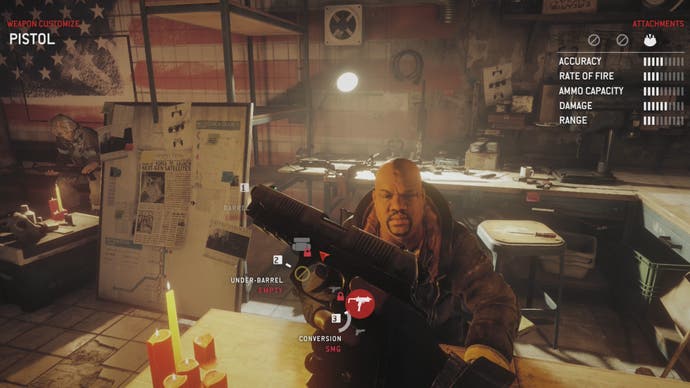
Sketchy setup aside, it's a city worth taking; Homefront's representation of Philadelphia is genuinely praiseworthy. It feels more populated and vibrant than The Division's New York, while a series of ramshackle walkways installed by the resistance make it genuinely fun to traverse. Most importantly, it's a city that knows its own limits - no pun intended. Shying away from being a true open world, Philadelphia is carved into a series of zones. Red zones are restricted areas swarming with guards and not much else, creating a buffer around the far more interesting yellow zones. The yellow zones form Philadelphia's population centres, each one just waiting to be stirred into open rebellion.
The benefit of structuring the city this way is that each zone feels distinct. While your activities in each sector are largely the same every time, the varying atmosphere and layout helps keep things from going stale. In a game that's all about capturing different flavours of outpost - hack this thing here, kill everyone in this location here - that's hugely important. The Revolution's level design not only gives each zone its own identity, but helps transform objectives into mini platforming puzzles, at points reminiscent of Half Life 2's City 17. Shimmying along a makeshift walkway halfway up a building and using a pair of bolt cutters to get through an access panel is genuinely satisfying, even if your ultimate goal is a hacking puzzle you've performed numerous times already.
You seize these objectives across the various zones of Philadelphia in order to reach the hearts and minds of its inhabitants; a lofty concept that's condensed down into a very literal 'hearts and minds' meter. Each zone is strewn with bits and pieces for you to sabotage as you try to fill the bar, at which point the people will take to the streets in open rebellion. While reductive, it's a neat enough mechanic that gives you a sense of the impact you're having on the city.
Dogging your every footstep in Homefront: The Revolution are the masked, trigger-happy soldiers of the KPA. While they're primarily employed as peacekeepers, your face is known to each and every one of them and they won't hesitate to start shooting if they positively identify you. Firefights can quickly prove overwhelming if you get careless, so you'll likely spend as much time avoiding the KPA as you do gunning them down - though you're not exactly up against first-rate AI, here. While KPA forces aren't completely stupid, they do have difficulty dealing with combatants once they've gone upstairs, making the more heavily guarded outposts fairly easy to cheese. It should also be noted that you can capture an outpost without bothering to kill the guards, if you're fleet enough; interacting with the main objective - hacking a terminal, for example - claims the outpost for you and instantly clears it of all hostiles, which feels like a bit of an oversight.

These issues aside, the actual shooty bits in Homefront: The Revolution are fairly robust. The weapons on offer are nicely varied, while headshots are punctuated with a bassy thump, generating a good sense of feedback. It's in the customisation options, though, that Homefront really shines. Each of your guns can be dismantled and rebuilt on the fly, letting you turn your assault rifle into an LMG or a limpet mine launcher in a matter of seconds. The way it's implemented - by having you simply look down at your gun, rather than traipsing through a menu - helps keep you in the moment and is probably the best example of how Homefront's guerilla premise translates to an actual gameplay mechanic. It's smooth enough, in fact, to leave me wondering why more games haven't tried the same thing.
There's no PvP multiplayer on offer in Homefront: The Revolution; instead, you can team up with three other players online and take on a handful of missions together in Resistance mode. These will feel pretty familiar once you're done with the story, though this mode feels considerably less forgiving than the main campaign. Either way, it's worth playing for the chance to play as an elderly lady armed to the teeth.
Homefront: The Revolution, in short, is a very well built video game. The gameplay is well structured, well executed and has some genuinely interesting ideas. With that in mind, it's disappointing that everything else about it is perfectly odious.
Everything you do in Homefront is geared toward rallying the people of Philadelphia and getting them to support the resistance, but the problem is there's nothing remotely likeable about these would-be liberators whatsoever. The resistance is a movement staffed exclusively by obnoxious surfer-bros who spend their days posturing about how much they love brutalising North Koreans - or Norks, as they're affectionately called (more on that later). It's a shallow, petulant movement; one that fails to express anything other than hatred for the existence of North Koreans. There's no tangible sense of hope to the resistance; no enthusiasm for rebuilding the country or even a vague sense of a plan - they are characterised and sustained only by their desire for violent retribution.
The leaders of the resistance - a triumvirate of dull, onenote clichés - are no better. You've got Parrish, the grizzled leader who insists the fight must go on no matter the odds; Dr Burnett, the conscience of the resistance who's obsessed with body counts, and Dana, the sadistic squad leader whose enthusiasm for torturing people with knives could make Far Cry 3's Vaas blush. These characters fail to deviate from their assigned roles one iota throughout The Revolution - from beginning to end, Dana espouses bloody murder, Parrish bangs on about just how free America needs to be (very), and Burnett pays lip service to common decency. The resistance is, from tip to tail, a crass and uninteresting organisation.
That crassness is especially apparent once we're introduced to the concept of collaborators, or 'clabs' - those citizens who cooperate with the KPA in exchange for a better quality of life. Once you get the rebellion going in the yellow zone in which they live, you're treated to a cutscene in which one of these (unarmed) collaborators is triumphantly thrown to the ground and beaten. You can also pick up a side mission that asks you to covertly photograph collaborators so that they can be identified and whacked by the resistance.
These moments, effectively, incentivise the murder of civilians over a matter of ideological difference; i.e. these people haven't joined the ranks of the resistance, thus deserve to die. The resistance, as a result, comes across as mean spirited - these people aren't fighting with a pure (or even passing) love of freedom in their hearts, they're just spiteful. Even with Burnett shouting ineffectively about the human cost of insurrection, Homefront: The Revolution is one long, chest-thumping revenge fantasy. Its ugliness is frequently pushed too far.
Your North Korean adversaries in Homefront: The Revolution are referred to as Norks. Given the more common colloquial use of that particular term, it'd be funny if it weren't so unpleasant: in Homefront: The Revolution the word Norks is used solely to refer to people from North Korea in a pejorative fashion, which is the very definition of a racial slur. I must have heard the word Norks hundreds of times during my playthrough and every instance was more painful than the last.
In short, the stars of Homefront: The Revolution are also its most disappointing aspect. Dambuster studios has tried to create a resistance that's embattled, determined and charismatic in the face of an oppressive regime. Instead, it's made one that's obnoxious and small minded. Homefront: The Revolution mistakes pettiness and nastiness for gravitas and emotional depth, to the detriment of the game as a whole.




